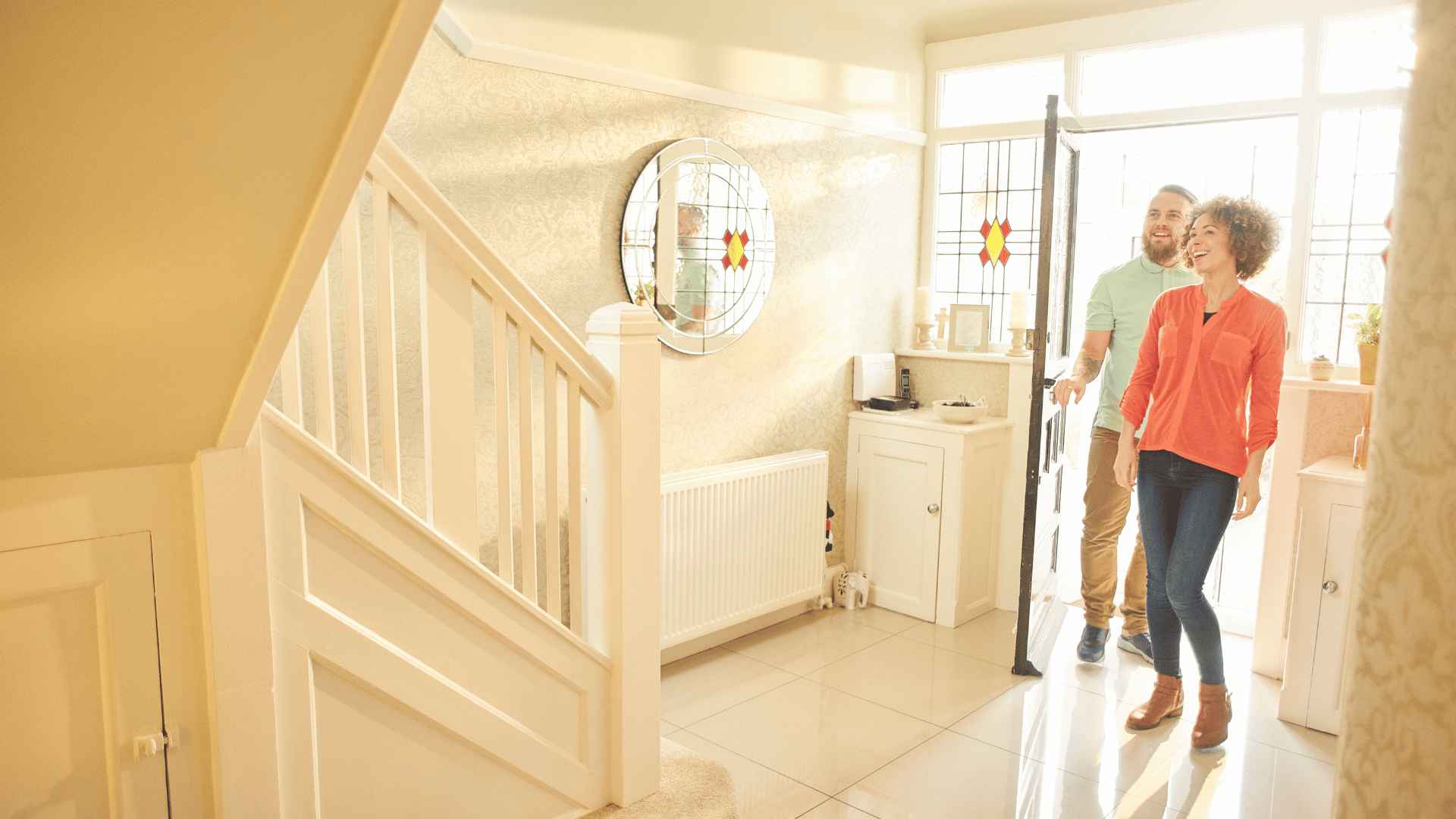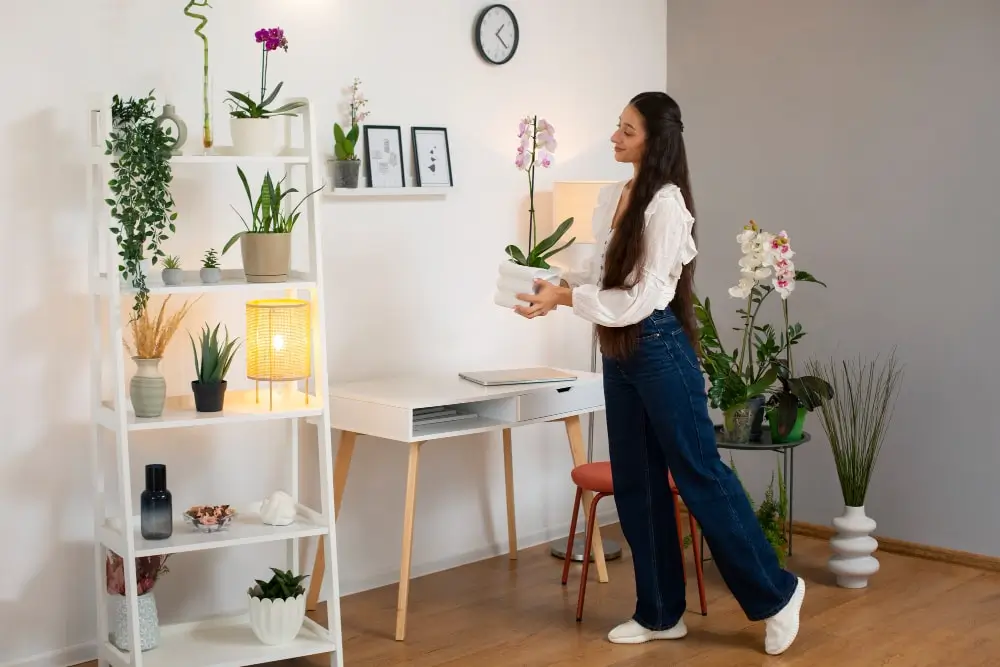House swapping, also known as a home exchange, is a practice where homeowners agree to trade their homes temporarily with each other for a specific period of time. It provides an opportunity for individuals or families to experience a different location while saving on accommodation costs. House swapping can be done either within the same country or internationally.
The meaning behind house swapping is rooted in the idea of mutual trust and benefit. Homeowners agree to let strangers stay in their homes while they, in turn, stay in the other person's home. This arrangement allows both parties to enjoy a new location without incurring the expenses typically associated with traditional accommodation options such as hotels or vacation rentals.
The process of house swapping generally involves the following steps:
Registration
When homeowners are interested in engaging in house swapping, they often turn to house-swapping websites or communities to facilitate the process. These various swap houses and platforms serve as online marketplaces where homeowners can connect with potential swappers, create detailed profiles, and list their properties available for exchange.
By joining a house-swapping website or community, homeowners gain access to a network of like-minded individuals who are also interested in swapping their homes. These platforms provide a centralized space where members can browse through available properties, search for their desired destinations on home exchange websites, and initiate communication with other homeowners.
The first step typically involves creating a profile on the house-swapping site or platform. Homeowners provide information about their property, including its location, size, amenities, and any other relevant details. They may also upload photos to showcase their home's different features and attract potential swappers.
Once the profile is set up, homeowners can start exploring the platform to find suitable properties for exchange. They can search based on location, dates, and specific preferences for other features such as the number of bedrooms, pet-friendly accommodations, or accessibility features. The platforms often provide advanced search filters to narrow down the options and find the perfect match.
When homeowners come across a property they are interested in, they can initiate contact with the other homeowner through the platform's messaging system. This allows them to discuss details, clarify any questions, and get to know each other better. Establishing good communication is vital to building trust and ensuring a successful house swap.
The house-swapping platforms also play a crucial role in facilitating secure communication between homeowners. They prioritize user safety by providing secure messaging systems that allow homeowners to exchange information without revealing personal contact details until they are comfortable doing so.
These platforms often offer additional features and tools to enhance the house-swapping experience. For example, some platforms provide built-in translation services to overcome language barriers between homeowners from different countries. They may also offer resources and guides to assist homeowners in preparing their homes for the swap, managing the logistics of home swaps, and making the most of their home exchange site and experience.
In summary, house-swapping websites and communities serve as valuable resources for homeowners interested in house-swapping. They create a platform for homeowners to connect, communicate, and exchange their properties. By leveraging these platforms, homeowners can expand their options, find suitable matches, save money, and embark on exciting adventures through home exchanges.
Search and Contact
In the process of house swapping, once members have joined a house-swapping website or community, they can begin their search for suitable homes in their desired destination. Using the platform's search functionality, they can input their preferences, such as location, dates, and specific criteria for the desired property.
The platform then generates a list of potential matches based on the search criteria. Members can browse through the listings and view property descriptions, photos, and any additional information provided by the homeowners. This allows them to assess whether a particular property aligns with their needs and preferences.
When members find a property that interests them, they can initiate contact with the homeowner through the website or platform. This is typically done by using the messaging system provided by the platform, ensuring that all communication remains within the secure and monitored environment of the website.
Through the messaging system, both parties can engage in discussions about the house swap sites offerings. They can exchange information, ask questions about the property, clarify any doubts or concerns, and discuss the specifics of the home exchange sites, such as the duration, exact dates, and any additional conditions or requirements.
This communication phase provides an opportunity for family members to get to know each other better. They can share details about their families, interests, and any special considerations they might have. Building a rapport with other members and establishing mutual trust is essential in the house-swapping process.
During the communication phase, members may also negotiate details related to the house swap, such as the use of amenities, transportation-free lodging arrangements, and any specific expectations or house rules. Clear and open communication helps ensure that both parties have a shared understanding of the exchange terms and feel comfortable proceeding with the home swap together.
The website or platform acts as a facilitator in this process, allowing members to connect and communicate efficiently and securely. By providing a centralized space for communication, the home exchange website or platform streamlines the house-swapping experience, making it easier for members to find suitable matches and engage in meaningful discussions with potential swappers.
Overall, the communication stage of house swapping plays a crucial role in establishing a solid foundation for a successful house exchange together. It allows members to explore potential matches, interact with homeowners, and ensure that both parties have a clear understanding of expectations, ultimately leading to a smooth and enjoyable house swap experience.
Agreement
Once homeowners have found a suitable match and are ready to proceed with a house swap, it becomes crucial to establish clear communication and formalize the exchange details through written agreements. This step ensures that both parties have a shared understanding of the terms and conditions, minimizing the risk of misunderstandings or conflicts.
After initial discussions and getting to know each other, the homeowners will collaborate to determine the duration of the house swap. They will agree on specific dates when each party will occupy the other's home. It's essential to consider factors like travel schedules, availability, and any specific preferences or constraints.
In addition to the duration and dates, any additional conditions or requirements should be discussed and agreed upon. This can include matters such as pet policies, use of amenities, care instructions for plants or pets, and any specific rules or guidelines for the property. Open and honest communication is key during this stage to ensure that both parties are comfortable with the arrangement.
To avoid misunderstandings, it is highly recommended to document the agreed-upon terms in written agreements. This can be in the form of a house-swapping contract or a detailed exchange agreement. The agreement should outline the responsibilities, expectations, and obligations of both parties. It may also cover aspects such as liability, insurance coverage, and any specific provisions or arrangements unique to the swap.
Having a written agreement provides clarity and serves as a reference point throughout the house swap. It acts as a reference document in case any issues or disputes arise during the exchange period. This formalization of the arrangement helps create a sense of security and mutual understanding between the homeowners.
Clear communication and written agreements are essential elements of a successful house swap. They lay the foundation for a smooth and enjoyable experience, ensuring that both parties have a shared understanding of the exchange terms and expectations. By establishing these agreements, homeowners can embark on their house swap with confidence, knowing that they have addressed important details and minimized the risk of potential misunderstandings.
Preparation
Once homeowners have finalized the house swap and the exchange period approaches, it's time to prepare for their guests' arrival. Homeowners take several steps to ensure that their guests have a comfortable and enjoyable stay during the house swap experience.
One of the primary tasks is to clean and prepare the house for their guests. Homeowners make sure that the property is tidy, organized, and welcoming. They may thoroughly clean the living spaces, bedrooms, bathrooms, and kitchen, ensuring that everything is in proper working order. The goal is to provide a clean and well-maintained environment that mirrors the experience they would expect in their own home.
In addition to cleanliness, homeowners provide essential instructions to help their guests navigate the property smoothly. This includes details such as how to operate appliances, security systems, or any other unique features of the home. Clear instructions ensure that guests can comfortably settle in and make the most of their stay.
To enhance the guests' experience and facilitate their exploration of the local area, homeowners often provide information about nearby attractions, dining options, shopping centers, and recreational activities. They may share recommendations for restaurants, sightseeing spots, parks, or cultural events. Sharing local insights and tips helps guests discover the best the area has to offer and make the most of their time during the house swap.
Transportation is another aspect that homeowners address to ensure a seamless experience for their guests. They provide information about public transportation options, including bus or train schedules, nearby stations, and any relevant details about obtaining tickets or passes. Homeowners may also share information about local taxi services, car rental options, or bike-sharing programs, helping guests navigate the area with ease.
Beyond the practical aspects of guest rooms, homeowners often go the extra mile to create a welcoming atmosphere. They may leave a welcome package with essentials like snacks, beverages, or local specialties to greet their guests upon arrival. Some homeowners may even provide a small guidebook or personalized recommendations to assist guests in getting acclimated to the neighborhood and the local culture.
By making necessary preparations and providing valuable information, homeowners ensure that many families and their guests feel comfortable, informed, and welcome during their house swap. These thoughtful gestures contribute to a positive home-swapping experience and foster a sense of hospitality and camaraderie between the exchanging parties, creating lasting memories and building meaningful connections.
House Swapping
Once the agreed-upon house swap period arrives, homeowners and their guests embark on an exciting adventure of living in each other's homes. This unique experience allows both parties to immerse themselves in a different environment and fully embrace the local lifestyle of their destination.
One of the significant advantages of house swapping is the opportunity to enjoy a fully furnished home. Homeowners open their doors to their guests, providing them with access to a comfortable and well-equipped living space. Guests can expect amenities such as kitchen appliances, laundry facilities, entertainment systems, and other comforts of home. This allows them to settle in and feel at ease during their stay.
Beyond the convenience of a furnished home, house swappers gain free access to amenities that come with their membership fee at the property. Depending on the specific arrangement, these amenities could include a swimming pool, a gym, a backyard, or any other unique features that the property offers. Such amenities enhance the overall experience and allow guests to indulge in a more enriching and relaxing stay.
One of the key benefits of house swapping is the opportunity for a more immersive local experience. By living in a residential neighborhood rather than a tourist area, guests can truly soak up the culture, traditions, and way of life of the destination. They have the chance to interact with neighbors, discover local shops and markets, and get a genuine sense of the community.
During the house swap, guests have the freedom to explore the city and new location at their own pace. Homeowners often provide valuable recommendations for nearby attractions, hidden gems, and off-the-beaten-path experiences. Guests can take advantage of this local knowledge to discover exciting sights like a local show, engage in activities, and truly make the most of their time in the area.
House swapping fosters a sense of adventure, allowing swappers to step outside their comfort zones and embrace the unknown. By living in each other's homes, they experience different lifestyles, gain new perspectives, and create lasting memories. It offers a unique way to travel the world, combining the comforts of home with the thrill of discovering a new destination.
Whether it's waking up to stunning views, savoring local cuisine, or simply enjoying the ambiance of a new neighborhood, house swappers have the opportunity to make the most of their temporary homes and fully immerse themselves in the destination. This unparalleled experience leaves a lasting impression and encourages a deeper connection to the places they visit.
Departure and Feedback
Once the exhilarating house swap adventure comes to an end, both parties return to the comfort of their own homes. As a final step in the house-swapping process, homeowners and guests have the opportunity to provide feedback or reviews about their experience in someone else's home. This valuable feedback plays a crucial role in building trust within the house-swapping community and assisting future swappers in making informed decisions about swapped homes.
Feedback and reviews serve as a means of expressing gratitude, appreciation, and constructive criticism. Homeowners and guests can share their thoughts, impressions, and insights about the property, the local area, and their overall experience during the house swap. This feedback helps others gauge the quality and reliability of potential house swap websites and partners.
Positive feedback reinforces the trustworthiness and reliability of homeowners and guests, highlighting the aspects that made the house swap enjoyable and memorable. It recognizes the effort put into creating a welcoming environment, providing helpful information, and ensuring a smooth and comfortable stay. Positive reviews not only boost the confidence of the homeowners or guests receiving them but also inspire others to engage in future house swaps.
Constructive criticism, on the other hand, provides valuable insights and suggestions for improvement. It allows homeowners to identify areas where they can enhance the experience for future guests. Similarly, guests can offer feedback on any areas they feel could be improved or enhanced. Constructive feedback helps homeowners refine their hosting skills, address any concerns, and ensure continuous improvement within the house-swapping community.
The exchange of feedback among house swappers helps establish a culture of transparency, trust, and accountability. It creates a supportive community where members of house exchange websites can learn from each other's experiences, share valuable tips, and form connections based on shared interests and destinations.
Moreover, future swappers can benefit from the feedback and reviews left on home swap websites by previous participants. They can gain insights into the reliability, cleanliness, and overall satisfaction of potential other swap homes and partners. This information empowers individuals to make well-informed decisions when choosing their house-swapping matches, increasing the chances of a successful and enjoyable exchange.
The feedback and review system in the house-swapping community contributes to the growth and sustainability of this unique form of travel. It encourages open communication, accountability, and continuous improvement, fostering a community of responsible and trustworthy participants. By sharing their experiences, homeowners and guests contribute to the collective knowledge of the community and ensure that future swappers can embark on their own unforgettable journeys with confidence and peace of mind.
Regarding safety, house swapping carries some inherent risks as it involves opening your home to strangers. However, many house-swapping platforms offer security measures to mitigate these risks. These can include user verification processes, member reviews and ratings, secure messaging systems, and support from customer service teams.
To ensure a safe house swap, it is advisable to:
- Use reputable house-swapping platforms that have a strong track record and positive reviews.
- Take the time to communicate extensively with potential swappers, asking questions and getting to know them before finalizing the exchange.
- Agree on clear terms and conditions, including house rules, responsibilities, and insurance coverage.
- Consider using a house-swapping agreement or contract to outline the expectations and obligations of both parties.
- Secure valuable or personal belongings before the exchange or make arrangements for their safekeeping.
- Inform trusted neighbors or friends about the house swap and provide them with contact information in case of emergencies.
- Follow your intuition and trust your judgment when evaluating potential swappers.
Overall, house swapping can be a rewarding and cost-effective way to travel, but it's crucial to prioritize safety and engage in thorough communication and planning to ensure a successful and enjoyable experience.
For more information on Vista Residences, email [email protected], follow @VistaResidencesOfficial on Facebook, Twitter, Instagram, and YouTube, or call the Marketing Office at 0999 886 4262 / 0917 582 5167.










